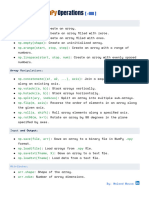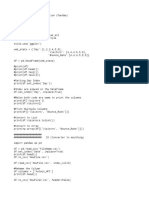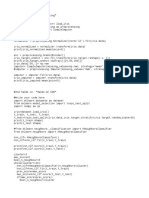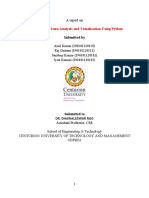0% found this document useful (0 votes)
40 views8 pagesNumPy Is
NumPy is a fundamental library in Python for numerical operations, providing functionalities for creating and manipulating arrays, performing mathematical and statistical operations, and handling random numbers. It includes various inbuilt functions for array creation, manipulation, linear algebra, and set operations, as well as methods for handling missing data. Key features include array indexing, reshaping, and operations like concatenation, stacking, and statistical analysis.
Uploaded by
Atif FirozCopyright
© © All Rights Reserved
We take content rights seriously. If you suspect this is your content, claim it here.
Available Formats
Download as DOCX, PDF, TXT or read online on Scribd
0% found this document useful (0 votes)
40 views8 pagesNumPy Is
NumPy is a fundamental library in Python for numerical operations, providing functionalities for creating and manipulating arrays, performing mathematical and statistical operations, and handling random numbers. It includes various inbuilt functions for array creation, manipulation, linear algebra, and set operations, as well as methods for handling missing data. Key features include array indexing, reshaping, and operations like concatenation, stacking, and statistical analysis.
Uploaded by
Atif FirozCopyright
© © All Rights Reserved
We take content rights seriously. If you suspect this is your content, claim it here.
Available Formats
Download as DOCX, PDF, TXT or read online on Scribd
/ 8


























































































